Elaine Temel and Brian Cofrancesco
The Connecticut Democracy Center at Connecticut’s Old State House
TEACHER'S SNAPSHOT
Subjects:
African Americans, Children, Civic Engagement, Civics, Civil Rights, Historic Preservation, Latina/o Studies, Politics & Government, Rights & Responsibilities of Citizens, Voting & Suffrage
Course Topics/Big Ideas:
Civic Engagement, The Struggle for Freedom, Equality, and Social Justice
Town:
Glastonbury, Griswold, Hartford, Lisbon, New Preston, Waterbury
Grade:
Grade 8, High School
Lesson Plan Notes
Our government is a democracy in progress, influenced by the wants and needs of its people. For democracy to work, all people must feel that their voices are important. Students, no matter their age, must be empowered to participate in and strengthen our democracy.
This activity challenges students to find their “civic voices” and use them as agents of change in local and state government. Students will build background knowledge by exploring historic examples of people using their voices to speak out about important issues in their communities. They will learn about civic leaders today and their roles in government and how laws are made in Connecticut. Students then will use their own “civic voices” to create positive change.
ESSENTIAL QUESTION
SUPPORTING QUESTIONS
- What is the structure of our local and state government and how does that influence change?
- What forms of action can civic participation take?
- How have individuals in local, Connecticut, and United States history used their “civic voices” to come together in order to create change on an issue they cared about?
- In what ways can students use their “civic voices” to take action in local and state government?
ACTIVITY
- Introduce the compelling and supporting questions.
- Explain that this inquiry activity is an opportunity for students to find their “civic voices” and use them effectively in their community to influence change in local and/or state government.
- Students will review and share their knowledge of the structure of local government, the three branches of state government, and how bills become laws. Teacher will introduce the names, positions, and photographs (if possible) of specific elected officials who represent the students in local and state government.
- Students will review the rights protected under the First Amendment to the United States Constitution, particularly freedom of speech and freedom to petition the government.
- Students will discuss ways people use their “civic voices” today, focusing on the right to petition the government. Answers may include: writing to elected officials, voting, studying politics, protesting, demonstrating, writing a letter to their local newspaper, writing petitions, testifying on proposed local or state legislation, hanging signs in their community, being involved with community organizations, social media, online petitions, community service, etc.
- Students will explore issues important to people in the past and discover how they used their voices to make change. They will use the Library of Congress Primary Source Analysis Tool worksheet to examine (“Observe”), respond to (“Reflect”), and discuss (“Question”) one or more of the primary sources in the Tool Kit.
- As a class or in groups, students will brainstorm problems or community issues important to them and other kids today. Problems may relate to: people in need, the environment, animals, school climate, youth employment, etc.
- Students will revisit the compelling question.
OPPORTUNITIES FOR ASSESSMENT
Individually or in groups, students will select a present-day issue they want to see changed in their community or state and research the issue in order to identify: root causes, the prevalence of the problem in their community or our state, and actionable ways to make a difference on the problem. They should look for recent articles and stories from local media outlets in order to understand the local context of the given problem.
Students will examine current and past state legislation (back to 2011) related to their selected community issues. Using the Connecticut General Assembly’s Bill Information Search (BIS), they will use keywords to search for current and past proposed legislation. With teacher assistance, they can also track changes made via the bill process during a legislative session. Students can also explore related information provided by the nonpartisan Office of Legislative Research.
Students will use their “civic voices” and take informed action in one of the following ways:
- Prepare an educational resource for students, adults, or elected officials about their selected community issues and actionable ways to make a difference.
- Speak about their chosen issues and the action they want officials to take during the public comment section of a local government or community meeting.
- Research and contact local or state elected officials who are working to make a difference on their selected issue or who they think should be doing more around that issue. They can write a persuasive letter or email that summarizes their ideas, shares their research, and explains what action they want the official to take related to the specific issue. For guidance, see “Writing to Your Elected Officials” on the Kid Governor® Website.
- Students can schedule a phone, virtual, or in-person interview with an elected official (with parent/guardian permission) to discuss their selected community issue.
- If the Connecticut General Assembly is considering legislation related to their community issues, students can identify key decision makers (supporters or opponents) and write a letter, send an email, or call one of them to voice their opinion on the issue.
- If the Connecticut General Assembly is considering legislation related to their community issues, students can testify at the State Capitol/Legislative Office Building during a public hearing. Prepare by watching CT-N’s brief “Making Your Voice Heard” videos or Democracy 101: Testifying at Public Hearings. (Note: Please review these videos in advance and use your discretion in showing them to students.)
RESOURCE TOOL KIT
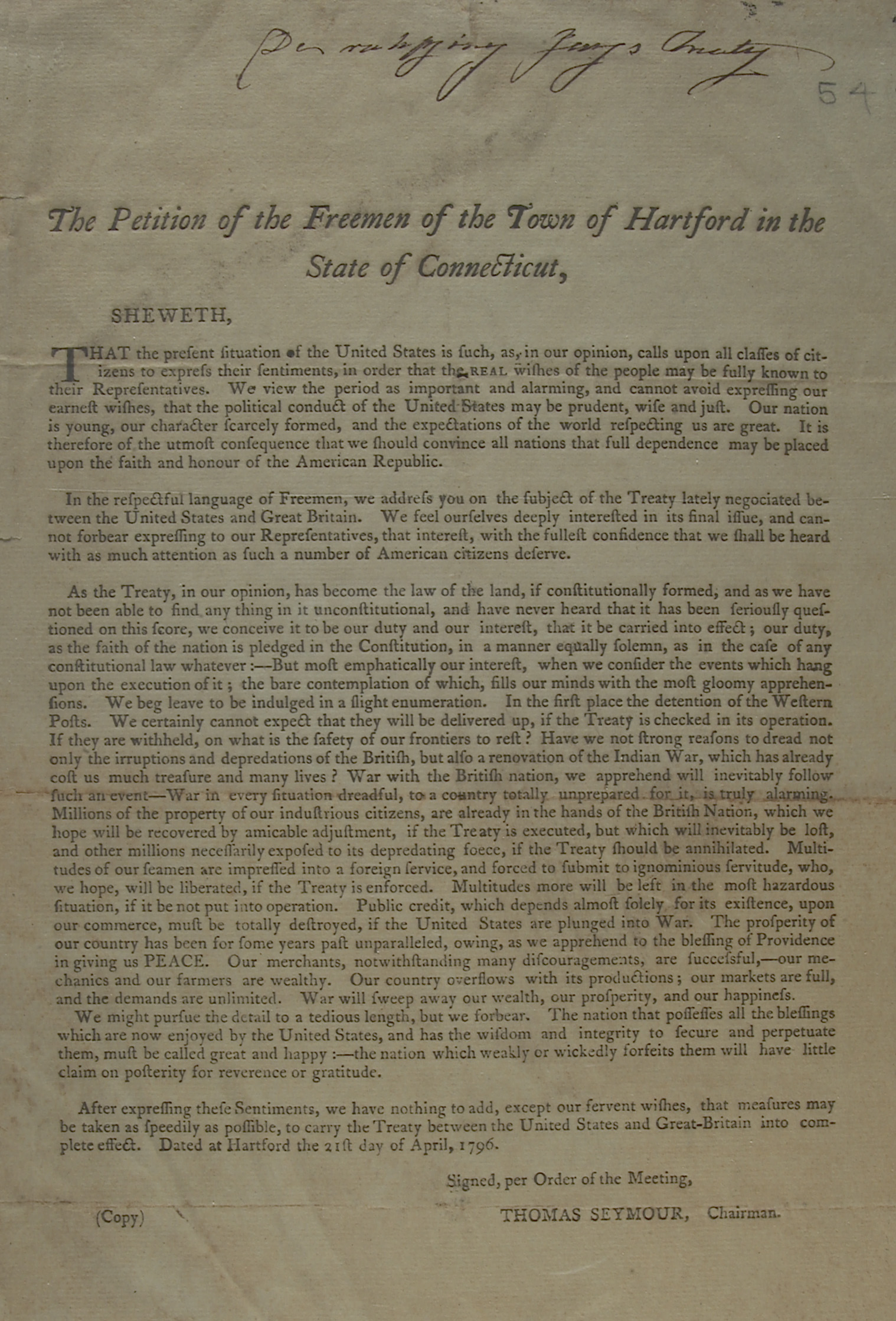
“Petition of the Freemen of the Town of Hartford in the State of Connecticut.” April 21, 1796. Connecticut Museum of Culture and History.
Note: The teacher may need to explain that many 18th-century documents/newspapers used the “long s,” which looks like an “f,” at the beginning or in the middle of words in place of the familiar “s.”
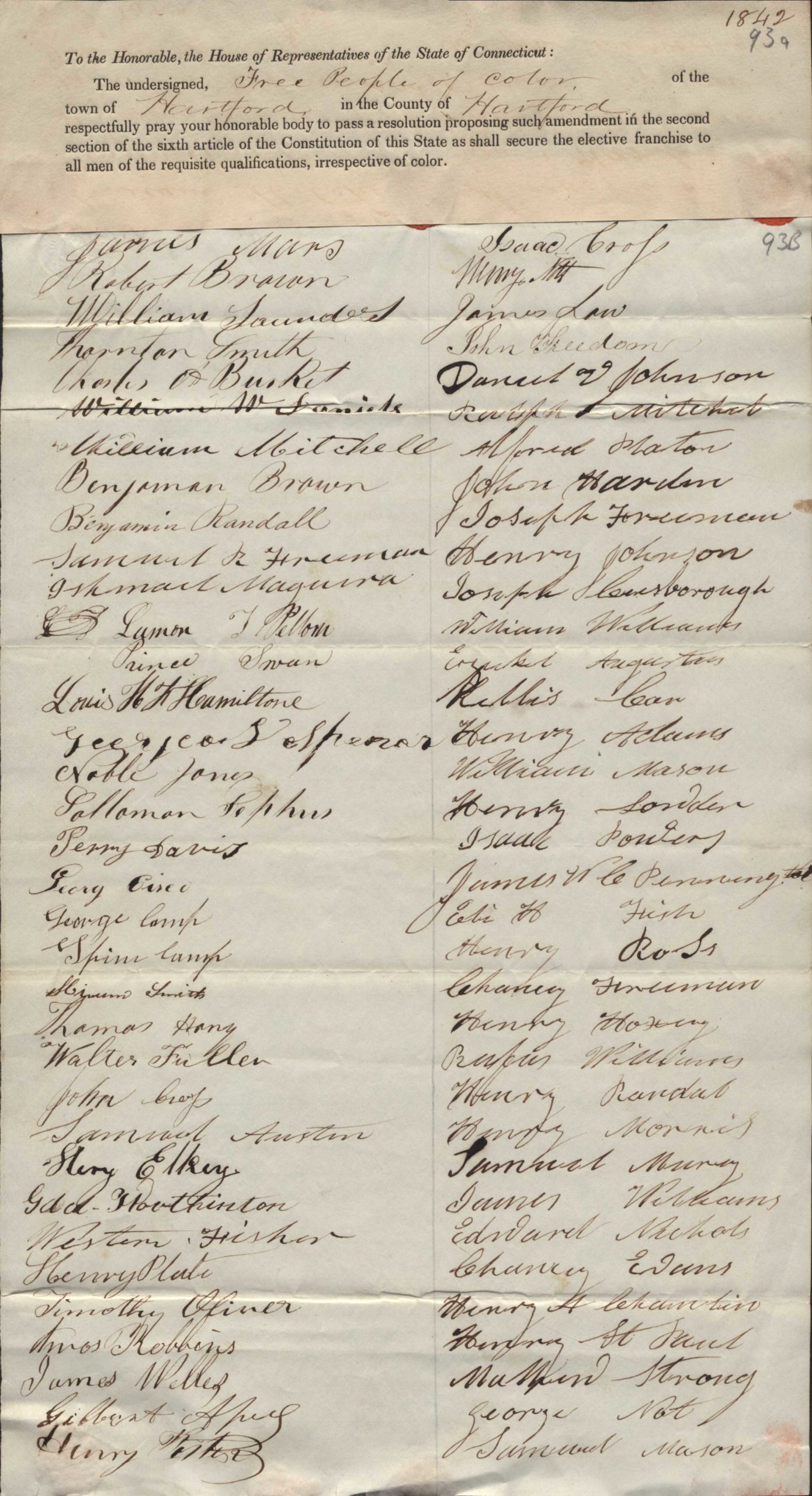
Petition of the “free People of Color of the town of Hartford” to the General Assembly to recognize voting rights for all men, regardless of color. May 1842. State Archival Record Group #2, Records of the General Assembly, Box 1, Folder 16 of the African-American collection files, 1821-1869. Connecticut State Library.
“Taxation Without Representation” The Hartford Daily Courant, November 10, 1873. Courtesy of the Newspapers.com archive.
In 1873, Abigail and Julia Smith of Glastonbury refused to pay a property assessment that was levied on them and two widows in their town, but not on their male neighbors. They made the argument of “no taxation without representation” because, as women, they did not have the right to vote or make decisions in their government. Their campaign began with a speech delivered by Abigail at a Glastonbury town meeting on November 5, later published in The Hartford Daily Courant.
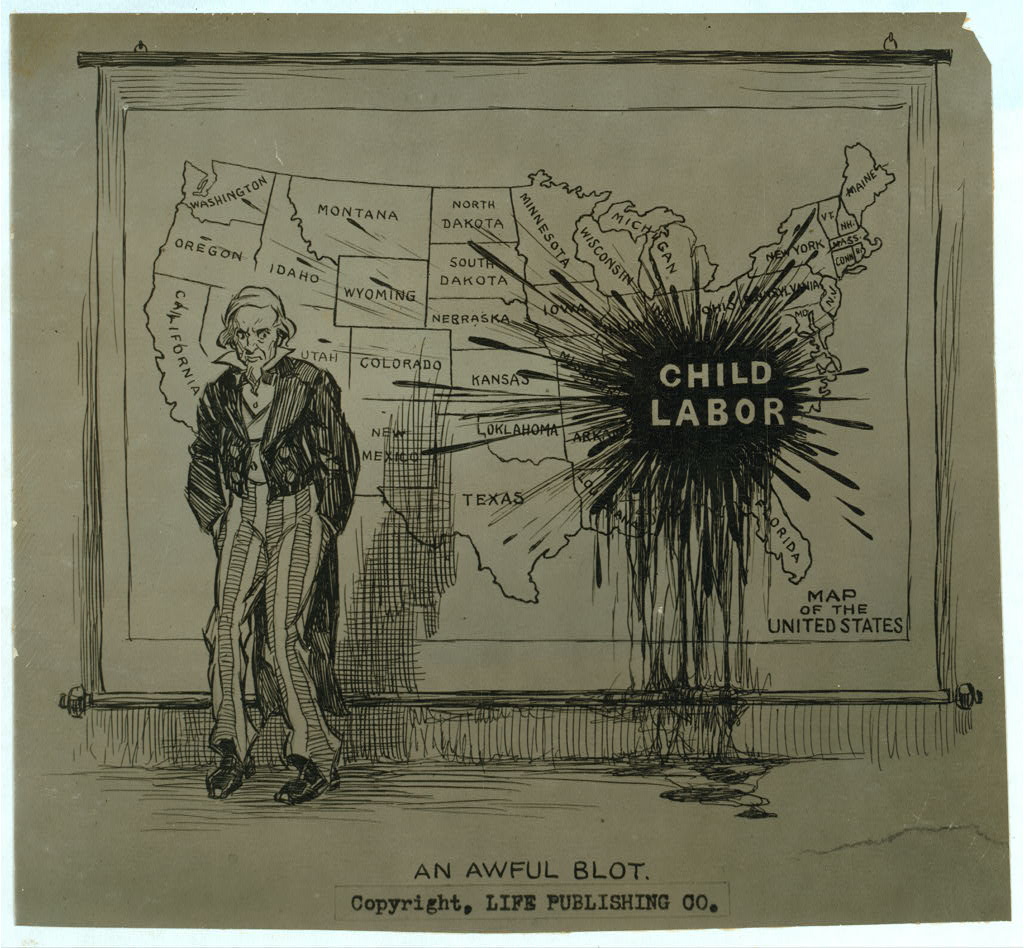
An Awful Blot, 1914? National Child Labor Committee collection, Library of Congress, Prints and Photographs Division.
“Governor Marcus H. Holcomb Awards the Fourteen Prizes in the Sunday ‘Courant’s’ Essay Contest on ‘Why the Old City Hall Should be Saved’” The Hartford Daily Courant, November 21, 1915.
Hartford students’ prize-winning essays advocating that Connecticut’s Old State House (then known as “Old City Hall”) be preserved.
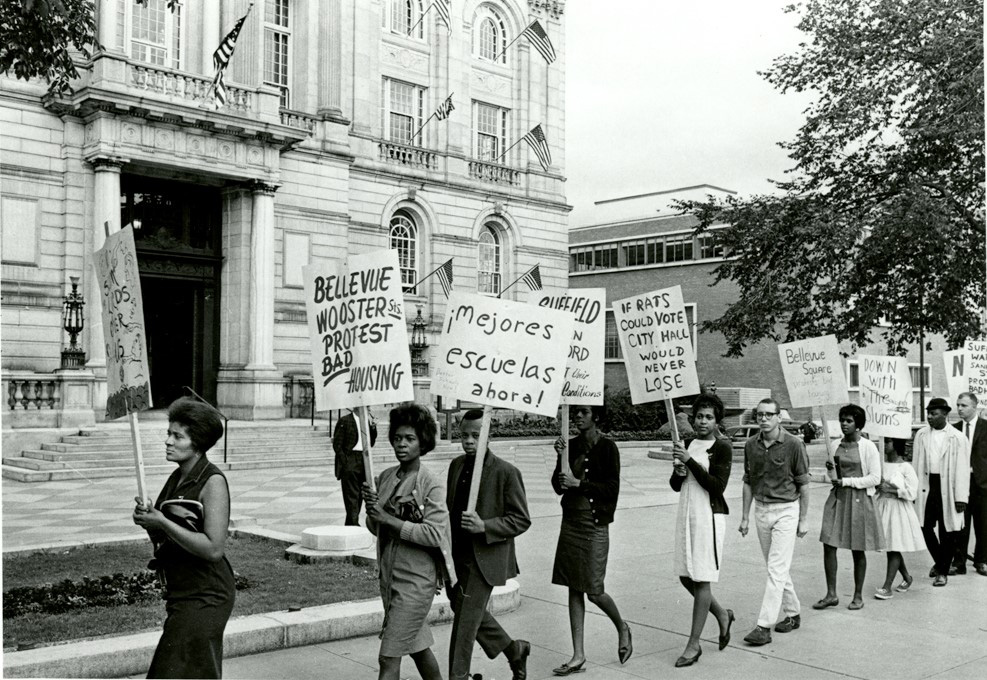
Protest in front of City Hall, Hartford. Photographed by Morton J. Boardman, around 1963. Connecticut Museum of Culture and History.
Demonstrators protest for better housing and schools in Hartford.
“Teen calls for exoneration of Connecticut witches.” The News-Times (Danbury, CT), October 11, 2007.
A New Preston teenager writes to state and British legislators asking for the exoneration of her ancestor and others who were convicted of witchcraft in colonial Connecticut.

Government Administration & Elections Committee February 27th (2019) Public Hearing
Two students who attend high school in Waterbury speak in favor of a bill they worked on with a state representative which would allow 16- and 17-year-olds to vote in local elections.

Library of Congress Primary Source Analysis Tool
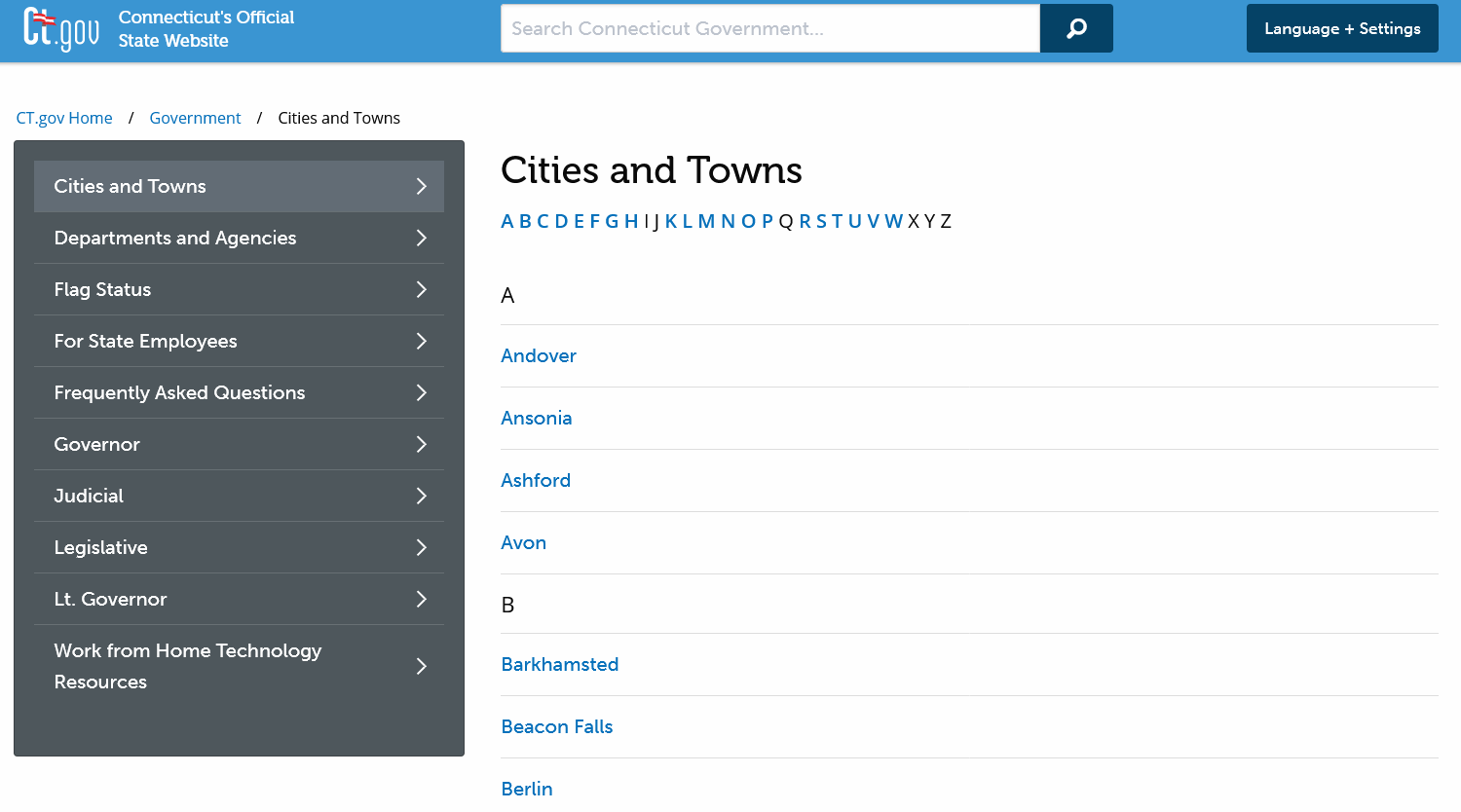
Links to Connecticut’s city and town websites from Connecticut’s Official State website.
ADDITIONAL RESOURCES
Places to GO
Connecticut’s Old State House, Hartford: Located in the heart of Hartford, Connecticut’s Old State House served as a home to all three branches of Connecticut state government from 1796 to 1878. Some of our state’s most important stories of freedom, democracy, and civic action—from the Amistad and Prudence Crandall trials to the Constitutional Convention of 1818—took place at this National Historic Landmark. Students can visit with their families for a public tour, or classes can participate in virtual or in-person school programs.
Connecticut State Capitol Tours, Hartford: The current State Capitol has been in use since 1878. The building and adjoining Legislative Office Building boast the chambers where our elected officials meet and conduct the business of the state. The League of Women Voters provides guided tours for the public and school groups. The public can also visit for self-guided tours.
Things To DO
Students can read books about people who have made a difference in their community, interview family members, and/or brainstorm people they know who use their “civic voice.”
Encourage your students to independently read books about “civic voice” and civic engagement. Some titles include:
- Student Voice: 100 Argument Essays by Teens on Issues That Matter to Them by Katherine Schulten
- How I Resist: Activism and Hope for a New Generation by Maureen Johnson
- The Promise of Change: One Girl’s Story in the Fight for School Equality by Jo Ann Allen Boyce and Debbie Levy
- You’re More Powerful Than You Think by Eric Liu
- March: Book One by John Lewis and Andrew Aydin
- Watch Us Rise by Renée Watson and Ellen Hagan
Websites to VISIT
Connecticut’s Kid Governor®. Download the free Toolkits for lessons and activities about the three branches of state government and how they work, voting, leadership, identifying important community issues, and taking civic action. The resources are geared towards fifth graders but can be modified for older students.
Kid Governor® Student Action Resource Center. Tools and resources that guide kids from identifying community issues to taking informed civic action.
Kid Governor® Writing to Your Elected Officials
ConneCT Kids. Kid-friendly information about Connecticut history, government, and more.
CT-N’s “Making Your Voice Heard” Videos. Please review these videos in advance and use your discretion in showing them to students.
Connecticut General Assembly’s Find Your Legislators tool
USA.gov’s How to Contact Your Elected Officials
State and Local Governments | iCivics
State, Local, and Tribal Governments | USAGov
Connecticut Assembly’s Bill Information Search. Search for current and past proposed state legislation. Navigating this tool may require teacher assistance!
Connecticut General Assembly’s Bill Tracking tool. This tool enables the public to follow a proposed bill as it moves through the legislative process. Depending on school IT guidelines, students may or may not be able to create their own account to monitor proposed bills.
Connecticut General Assembly’s Office of Legislative Research. This nonpartisan office provides information, research, and reports on proposed and passed legislation.
CT-N’s (Connecticut Network) On-Demand Videos. Years of recordings of committee hearings, legislative sessions, press conferences, and other important state government proceedings.
Democracy 101: Testifying at Public Hearings–Civic Leadership Webinar Series
“The History of Hartford Protests.” In this virtual program from Connecticut’s Old State House, Steve Thornton shares his involvement with and a history of protests in Hartford. (56:03)
Connecticut’s Old State House YouTube Channel. Access videos of past programs about civic engagement, civic participation, history, and more.
Articles to READ
ConnecticutHistory.org:
- “James Mars”
- “The Smith Sisters, Their Cows, and Women’s Rights in Glastonbury” by Molly May
- “Witchcraft in Connecticut” by Andy Piascik
- “Blacksmith Isaac Glasko Challenges the State Constitution” by Andy Piascik
- “Child Labor in Connecticut” by Patrick J. Mahoney
“Connecticut Lieutenant Governor’s Message to Students: ‘We Need Young People, and We Need Diversity’” by Renee Chmiel. University of New Haven, December 17, 2020.
“State and Local Government.” The White House.
“Guest Post | Ideas for Student Civic Action in a Time of Social Uncertainty” by Steven Zemelman. The New York Times, May 18, 2017.



